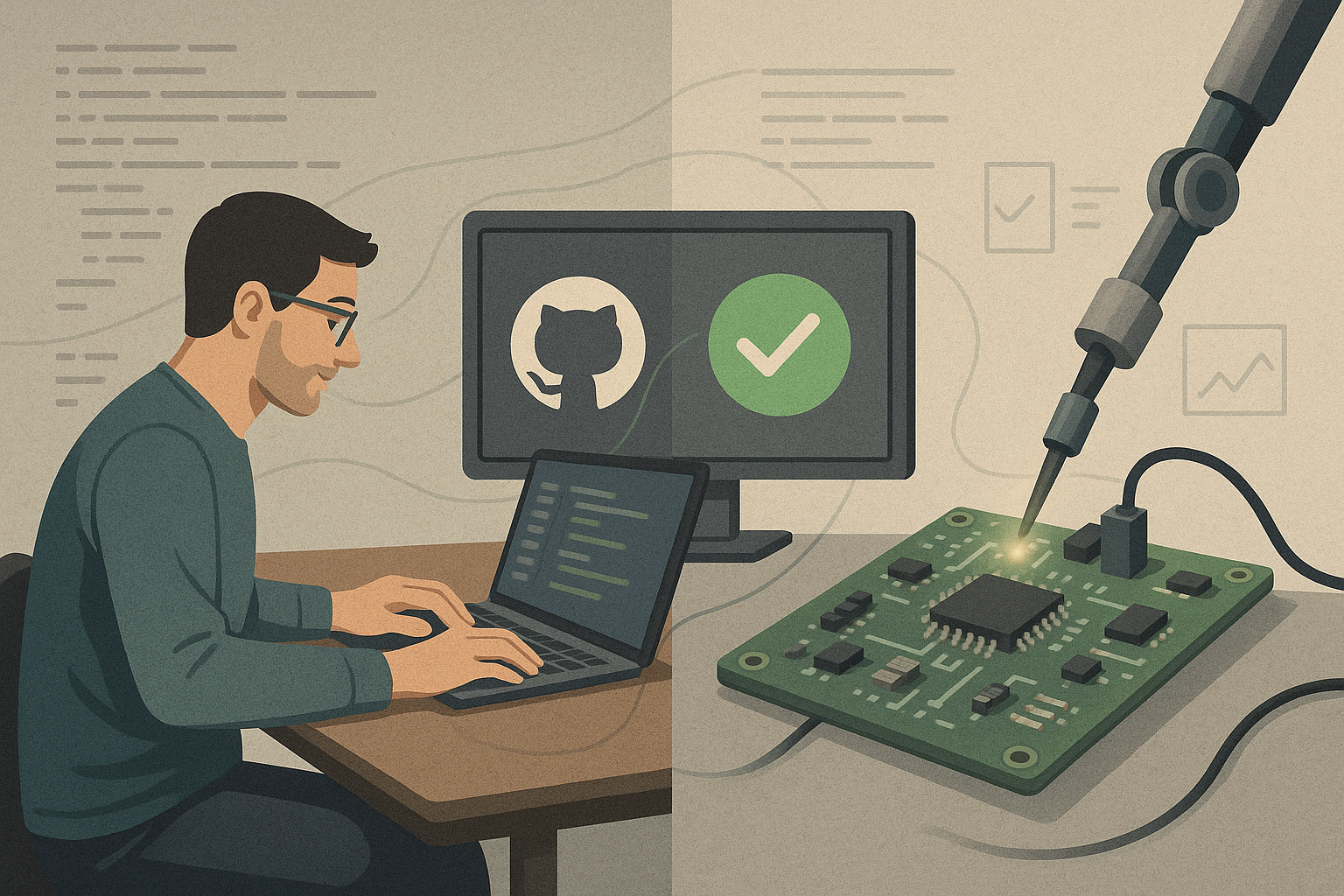Continuous Integration and Continuous Deployment (CI/CD) workflows have transformed software development, helping teams iterate faster, reduce human error, and confidently ship. But when it comes to embedded firmware, where physical hardware, low-level constraints, and longer testing cycles come into play, CI/CD can feel like trying to fit a square peg into a round socket.
So, what is possible when firmware is part of the equation? It turns out that a lot more is possible than most teams expect.

The Reality CI/CD for Embedded Is Not a Myth
Embedded systems have historically lagged behind web and app development in terms of automation. You’ve got custom toolchains, limited debugging visibility, and physical devices that don’t fit neatly into cloud-native pipelines.
But modern toolchains, simulators, and firmware-friendly CI/CD platforms are changing the game.
You may not be auto-deploying to a satellite in orbit (please don’t), but you can:
-
Automatically build and validate firmware on every pull request
-
Run unit tests, integration tests, and static analysis in simulators or containers
-
Flash hardware devices on test benches via remote USB hubs
-
Gate releases behind hardware-in-the-loop (HIL) test suites
-
Generate and version build artifacts with traceability back to commits
In other words: the basics of CI/CD to build, test, verify, and deploy are not only doable, they’re essential if your team wants to scale embedded development without burning out or introducing critical regressions.
The Tools: Frameworks That Make It Happen
While there’s no one-size-fits-all solution, there’s a growing ecosystem of CI-friendly tools and platforms built with firmware in mind. Here’s a look at what works:
Build Systems
- CMake and Make are still foundational for firmware projects.
- PlatformIO wraps these with a friendly CLI and IDE integration.
Test Frameworks
- Unity or Ceedling for unit testing in C
- Google Test for C++ firmware code
- doctest or Catch2 for lighter-weight setups
Simulators & Emulators
- QEMU: full-system emulation for ARM and RISC-V targets
- Renode: simulates hardware and supports complex integration tests
CI Runners & Orchestration
- GitHub Actions and GitLab CI both support containerized firmware builds
- Jenkins with custom agents for bare-metal workflows
- CircleCI and Buildkite for flexible hardware integration
Hardware-in-the-Loop (HIL)
- OpenOCD for flashing and debugging over JTAG/SWD
- pyOCD for ARM Cortex-M debugging
- LabGrid, Torizon, or custom USB switch rigs for remotely managing test devices
Artifact & Release Management
- Artifactory, Nexus, or even GitHub Releases for tracking binary artifacts
- Version your .hex, .bin, and .elf files alongside commit hashes and test status
How Software-Hardware Co-Dev Actually Looks in CI
In hybrid environments, think web app talking to a custom device, CI/CD gets even more interesting. You might:
- Build and test your backend API using Docker
- Simulate firmware responses to test integration layers
- Automate firmware builds and flash real devices
- Run end-to-end tests involving both the firmware and software stack
- Deploy builds to staging environments and field-test units with OTA updates
The result is a feedback loop that actually works across hardware and software, shortening dev cycles, increasing release confidence, and giving your team the superpower of safe iteration.
What’s Possible Right Now?
You don’t need to automate everything at once. Start with a simple CI job that builds firmware and runs tests. Add hardware integration next. Gate releases behind a green test matrix. Grow the pipeline as your confidence grows.
CI/CD for embedded isn’t science fiction anymore. With the right tools, planning, and willingness to experiment, you can build firmware with the same modern workflows your software team already loves.
